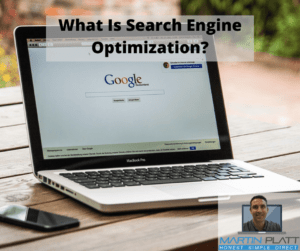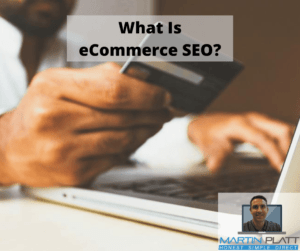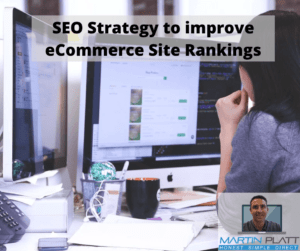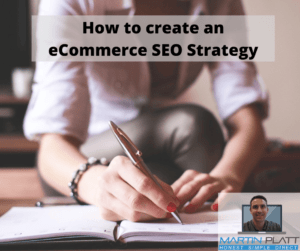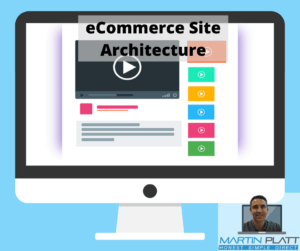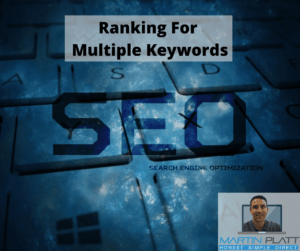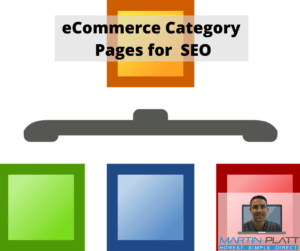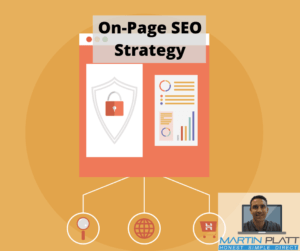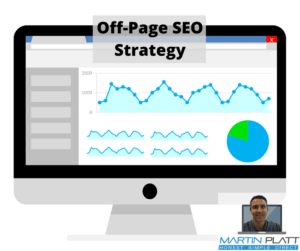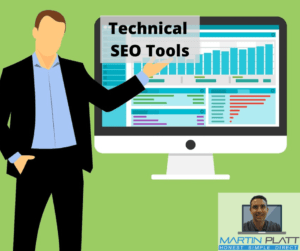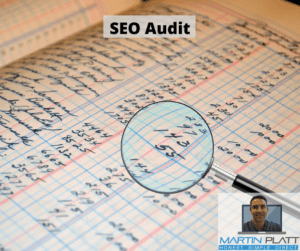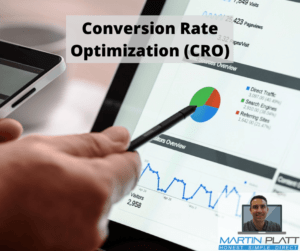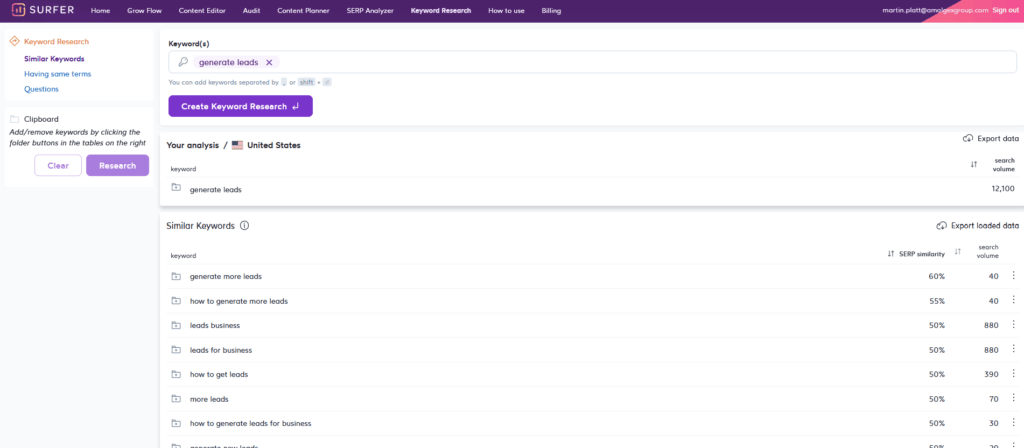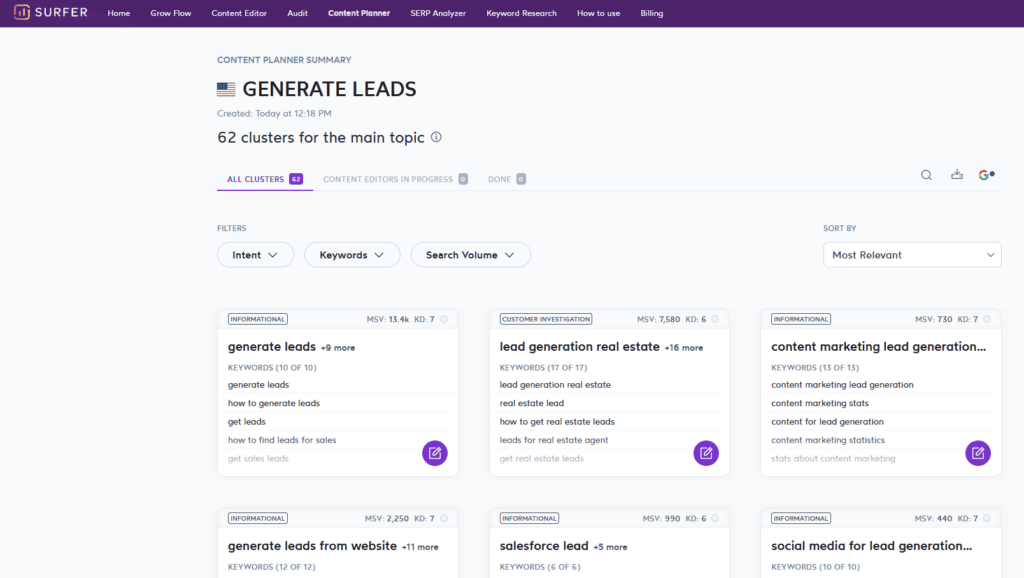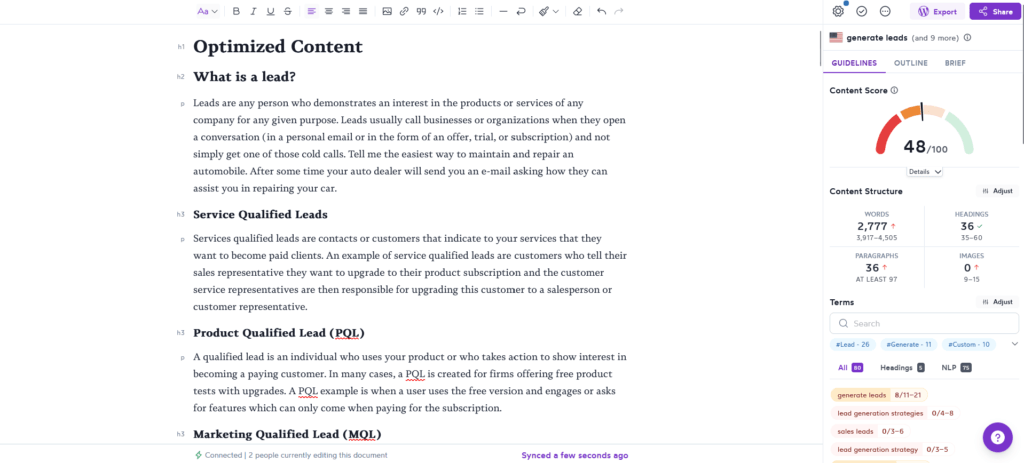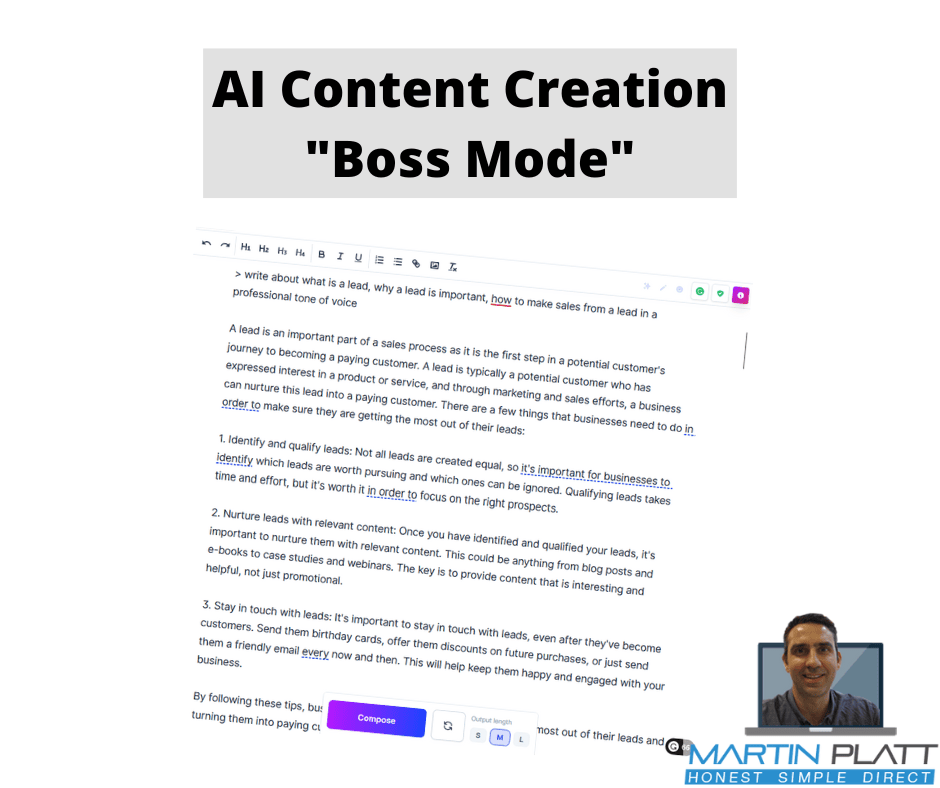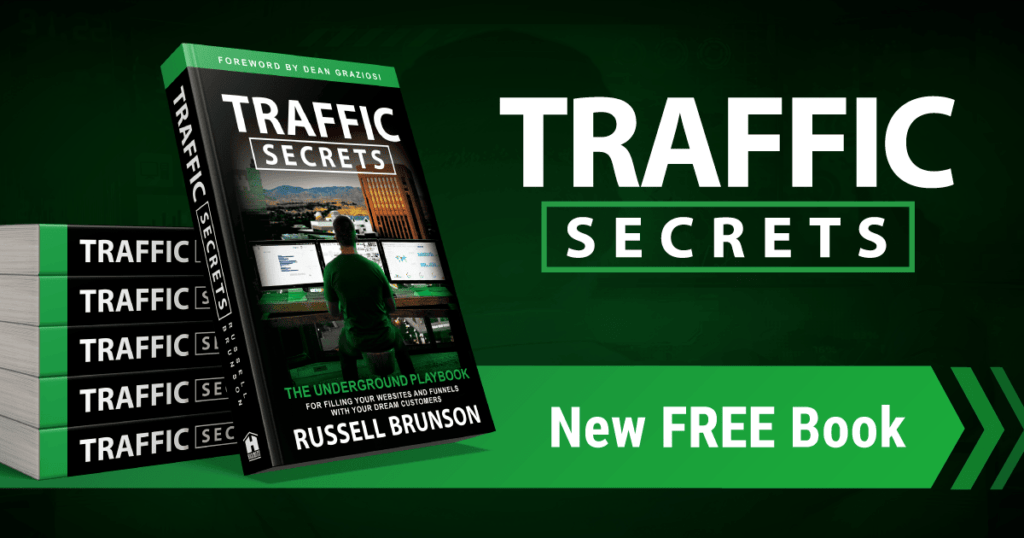What Is The Best eCommerce SEO Campaign For Your Websites?
SEO, or search engine optimization, is the process of improving the ranking of a website on search results.
The higher the ranking, the more likely people are to find the site. eCommerce websites rely heavily on traffic from search engines to be successful, so SEO is essential for them.
Find out how to do the best eCommerce SEO campaign for your website, and start to see some sales and success by reading on...
What is Search Engine Optimization (SEO)?
Search engine optimization, or SEO, is the practice of improving the ranking of a website on the search engine results page (SERPs). This can be done by optimizing the site's content, structure, and on-page elements like titles, meta tags, and anchor text.
SEO is important for eCommerce sites because most consumers start their product searches on Google or other search engines. A high ranking in SERPs means more traffic to your site and more potential customers.
Site speed is also an important factor for SEO. Consumers are impatient and will leave a website that takes too long to load. Internal linking helps to keep visitors engaged with your site by providing links to related content within your pages.
SEO can be a complex and time-consuming process, but there are some simple things you can do to improve your ranking. Creating quality content, optimizing your website's structure, and using on-page SEO techniques like titles, meta tags, and anchor text (on-page SEO) will help your site rank higher on the search engine results page.
What is an eCommerce Site?
An eCommerce site refers to a web-based store that allows customers to purchase products or services over the internet.
The site typically has a catalog of items for sale and a payment system that allows customers to check out and pay for their items.
To be successful, an eCommerce site must have a well-designed website and effective search optimization (SEO) strategy.
There are many different types of eCommerce sites, ranging from small mom-and-pop shops to large online retailers.
The most successful eCommerce sites are those that offer a great user experience, have a strong SEO strategy, and offer a wide selection of products or services.
User Experience
The user experience (UX) of an eCommerce site is extremely important.
A good UX means that users can easily find what they are looking for on the site, and that the checkout process is quick and easy.
A bad UX can result in lost sales and a high bounce rate.
There are a few key things to keep in mind when designing the UX of an eCommerce site:
- Navigation should be easy to understand and use
- The site should be visually appealing
- The checkout process should be quick and easy
- Product pages should provide enough information to help customers make a purchasing decision
SEO Strategy
A strong SEO strategy is essential for any eCommerce site.
Without SEO, it will be difficult for potential customers to find the site in the first place.
And if the site is not ranking well in search results, potential customers will likely go to a competitor’s site instead.
SEO for eCommerce sites is therefore of utmost importance, so read on, if you want to find out more.
Why SEO For an eCommerce Site?
The main difference between SEO for eCommerce sites and standard website SEO is that the former focuses on optimizing pages for product pages and category pages, rather than individual blog posts or articles.
eCommerce sites typically have a large number of product pages, and it's important to make sure these pages are indexed and ranked by search engines so that shoppers can easily find them.
In addition to optimizing product and category pages, eCommerce SEO also includes optimizing images, links, and other elements that can help improve search visibility.
By taking these steps, eCommerce sites can see a significant increase in traffic and conversions.
What is eCommerce SEO?
eCommerce SEO is the process of optimizing an online store for search visibility.
It encompasses all of the strategies and techniques used to improve Rankings, Click-Through Rates (CTRs), and organic traffic.
The goal of eCommerce SEO is to attract more visitors to your website by ranking highly for relevant keywords in the search engine results pages (SERPs).
When done correctly, eCommerce SEO can help you:
- Generate more traffic to your website
- Increase organic visibility for your brand
- Improve click-through rates and organic CTRs
- Boost conversions and ROI
Several different factors go into eCommerce SEO, including on and off-page optimization, technical SEO, and local SEO.
To see success with eCommerce SEO, it's important to focus on all of these different elements.
And to do this you need software to make it easier for you, 5 BuilderAll alternatives for marketing shows you some possible software solutions you could use (click the link to find out more about them).
How Does an SEO strategy improve eCommerce sites' Google Search Rankings?
eCommerce SEO is a process by which online retailers can improve their visibility and organic search traffic on websites like Google.com.
Typically, eCommerce websites are built in a way that makes it difficult for search crawlers to index all of the site’s content.
As a result, these sites may not appear as high as they could on search results pages (SERPs such as Google search).
eCommerce SEO helps retailers overcome these challenges and optimize their websites for better rankings and more organic traffic.
Ranking Factors
Several factors contribute to an eCommerce website increasing its rankings.
One of the most important is on-page optimization, which refers to the process of making sure your website’s content and structure are effective at attracting and engaging visitors.
This includes things like title tags, meta descriptions, eCommerce keyword research, and more.
Linking
Another important factor is backlinks, which are links from other websites to your eCommerce web properties. Internal linking from your site counts, and a good site structure both help with navigation. Internal linking also allows you to suggest other content or a product page that the visitor might like to see.
Duplicate content is not something that helps rankings. If your content is copied, or significantly similar, and offers nothing over and above what others have done, then it won't rank as well. Duplicate content could also get you in trouble for copyright infringement, so definitely avoid copying.
Backlinks act as a vote of confidence for your website and can help improve your rankings in SERPs (Google search for example).
Site Speed
Finally, another key ranking factor is site speed, which refers to how quickly your website loads. faster loading times can lead to higher rankings and more organic traffic.
See further on in this article to find out the easiest and quickest way to make your site super fast.
Ultimately, an effective eCommerce SEO strategy can help your website rank higher in SERPs, resulting in more organic traffic (search volume) and sales.
By focusing on things like on-page optimization, backlinks, and site speed (here's an article on the best WordPress Caching Plugins), you can give your website the best chance of ranking well and driving more organic traffic.
Did you know that 65% of shoppers are more likely to buy from a retailer with a well-optimized website? If you’re not sure where to start with your eCommerce SEO strategy, this article can help.
How to create an SEO strategy for eCommerce Websites
Creating an SEO strategy for eCommerce web stores can be a daunting task.
However, by following some simple steps, you can create a plan that will help your website rank higher on search results pages (SERPs such as Google search).
When it comes to SEO, there are two main types of strategies: on-page and off-page.
On-page optimization refers to the techniques used to improve your website's ranking in search results on your site.
This includes factors such as title tags, meta tags, and keyword density.
Off-page optimization, on the other hand, refers to the strategies used to promote your website through link building and social media.
To create an effective SEO strategy, you need to focus on both on-page and off-page optimization.
eCommerce Site Architecture
eCommerce site architecture is important for SEO because it determines how your pages are linked together.
Making sure that your site is easy to navigate and has a logical hierarchy will help Google index your pages correctly.
Content Management
You can improve your eCommerce site's architecture by using a content management system (CMS) that is SEO-friendly, creating custom navigation menus, and using breadcrumbs.
A well-designed eCommerce site should be easy for customers to use.
The navigation should be clear and logical, and the checkout process should be quick and easy.
A good eCommerce site architecture will help Google understand your pages and index them correctly.
Using a CMS that is designed for SEO will help you create an eCommerce site that is easy to navigate and has a logical hierarchy.
Creating custom navigation menus will help customers find what they are looking for quickly and easily.
Using breadcrumbs will help Google understand the structure of your site and index your pages correctly.
Improving your eCommerce site's architecture is an important part of SEO.
By using a CMS that is SEO-friendly, creating custom navigation menus, and using breadcrumbs, you can make sure that your site is easy to navigate and has a logical hierarchy.
This will help Google index your pages correctly and improve your SEO.
How to create a good site architecture in WordPress
A well-structured eCommerce web store is key to good eCommerce SEO. In this article, we'll discuss some tips for creating a good site architecture in WordPress.
1. Start with a clear hierarchy
When you're building your site, it's important to start with a clear hierarchy. This will help ensure that your visitors can easily find what they're looking for.
2. Use categories and subcategories
Categories and subcategories are great ways to organize your products. Make sure to use both of them to create a well-structured site.
3. Use pagination
When you have a lot of products, it's important to use pagination. This will help keep your page loading times fast and ensure that your visitors don't get overwhelmed by too much information.
4. Use breadcrumbs
Breadcrumbs are a great way to help your visitors navigate your site. They provide a clear path back to the main category pages, and they also help Google index your site correctly.
5. Use redirects wisely
Redirects are an important part of SEO, but they can also be tricky. Make sure to use them wisely, and always test them before you launch your site.
6. Use captions and alt tags
Captions and alt tags are important for both visitors and search engines. They help describe what's on your page, and they can also help improve your SEO.
7. Use proper permalinks
Permalinks are the URLs of your pages and posts. It's important to use proper permalinks so that your pages can be easily found and indexed by search engines.
8. Use a sitemap
A sitemap is an important part of any website, but it's especially important for eCommerce sites. This is because a sitemap helps search engines index your site correctly.
9. Use Google Analytics
Google Analytics is a free tool that helps you track your website's traffic. It's essential for any eCommerce web store, as it can help you understand where your visitors are coming from and what they're looking for.
10. Use a responsive design
A responsive design is important for any website, but it's especially important for eCommerce sites. This is because a responsive design ensures that your site will look good on all devices, including mobile devices.
11. Use rich snippets
I recommend you use a plugin such as Rank Math if you're using WordPress, to insert rich snippets for each of your products. This will make the products appear at the top of the search, and has the potential to get you a bigger share of traffic.
It is also important to consider as
part of the site structure, internal linking, as this allows visitors to
navigate between your articles, and get the information that they need.
Here, you might want to read The Ultimate Guide To Build A WordPress Website for more information as well.
Ranking for Multiple Keywords
If each of these articles has different target keywords, then you can rank for multiple target keywords both within one page and across the site.
This strengthens the concept of your being viewed as an expert or authority figure in the industry.
Both product and category pages are useful tools for eCommerce stores. Not only do they help visitors find products in your online store, but they also allow them to filter and navigate directly to whatever it is that they are interested in buying.
When you rank for multiple keywords, don't avoid difficult keywords to rank for. As an expert, you would include everything, so avoiding high keyword difficulty isn't something you should do. In time, those with high keyword difficulty will start to rank, as you become known as an expert.
In this way, your eCommerce stores must have good site architecture through product and category pages, with your product page ranking well for your commercial intent target keyword, and rich product descriptions.
Read about site structure, product and category pages, and product descriptions in the next sections.
eCommerce Product Pages for SEO
eCommerce product pages are essential for good search rankings. By optimizing these pages, businesses can improve their visibility and attract more customers. There are several things to keep in mind when creating product pages for SEO:
1. Make sure the title is clear and concise and includes the keyword you are targeting.
2. Use keywords throughout the page, including in the URL, title tag, description, and in the text itself.
3. Make sure the page is well-structured and easy to navigate.
4. To rank higher, it’s important to regularly update your product pages with fresh content including images and videos.
5. Enable customer reviews and use social media to promote your products.
Have rich product descriptions that include your target keyword and a product page that is clear and precise, and makes it very easy to buy.
Product pages will showcase the product, they must be eye-catching, have the schema markup to feature in rich snippets (the product listing pictures in search), and feature ideally on the first page in the search rankings.
You need to use on-page Search Engine Optimization for eCommerce to ensure that your page is well understood by Google (use an SEO audit if unsure if you have done it properly) A good eCommerce technical SEO tool for this is SemRush and is one of the best eCommerce SEO tools you can get to help you with link building, assess your product pages, and improve your online store. Most eCommerce sites use tools like SemRush to help them with building links, and page SEO for eCommerce.
By following these tips, businesses can create winning product pages that will help them achieve better search rankings.
eCommerce Category Pages for SEO
Category pages are an important part of any eCommerce website. By creating well-optimized category pages, you can improve your site's SEO ranking and attract more visitors.
There are several things you can do to optimize your category page for SEO:
1. Make sure your titles and descriptions are keyword-rich and descriptive.
2. Place keywords throughout your website's content, including in the title, body, meta tags, and meta description.
3. Use images and videos liberally, and be sure to include relevant keywords in the file names and alt text.
4. Optimize your website's loading speed and ensure that it is mobile-friendly.
5. Promote your website on social media and elsewhere online.
A category page acts as a grouping so that products of a similar type can be found by site visitors.
This means that your category page must be very specific with the description, to allow visitors to find what they want on your category page.
This page will show you multiple products in the category, which gives the visitor a choice but also allows you to be able to better help them to achieve their goals.
It also means that you can use the fact that they are searching in that category page to understand that they are looking at specific solutions, and are ready to buy.
You need to provide them with the information that they need to allow them to easily understand and do that.
By following these tips, you can create useful category pages through a powerful on-page strategy that will help your eCommerce business thrive online.
eCommerce Keyword Research
SEO Keyword Research - Long-tail vs Short-Tail
SEO eCommerce keyword research is the process of finding the right keywords to target for your website to rank higher in search results pages (SERPs). When it comes to SEO, there are two types of keywords: short tail and long tail.
Short tail keywords are general terms that are typically one or two words long. They are often high-traffic, high-competition keywords that can be difficult to rank for. Because of this, short-tail keywords are best used for branding and traffic generation purposes.
Long tail keywords are more specific than short tail keywords and are made up of three or more words. They are easier to rank for than short-tail keywords because there is less competition for them. As a result, long-tail words are best used for SEO purposes, such as ranking for specific search queries, and short-tail keywords generally have a higher search volume.
When it comes to SEO, it is important to use a mix of both short-tail and long-tail keywords to achieve the best results. By targeting both high-traffic and low-traffic keywords, you can increase your site's visibility in SERPs while also driving more qualified traffic to your website.
Relevant Keywords
When it comes to eCommerce, keyword research is essential to ensure your website is being found by potential customers (and that it has the traffic or search volume). The first step is to come up with a list of relevant keywords that your target audience might use when searching for the products or services you offer. You can use a variety of tools to help you do this, including free online resources as well as paid tools like Google Keyword Planner(part of AdWords).
Once you have a list of keywords, the next step is to determine which ones are the most important to focus on. You can do this by evaluating the competitiveness of each keyword and its potential impact on your business. The most competitive keywords are going to be more difficult to rank for, but they could also bring in more traffic and leads if you're successful. Conversely, less competitive keywords may be easier to rank for, but they may not generate as much traffic or ROI.
Ultimately, the goal is to find a balance between competitiveness and the potential impact that will help you achieve the best results for your eCommerce business. By focusing on the right keywords and using the appropriate SEO tactics, you can improve your website's visibility and drive more traffic and conversions.
Search Intent Keywords
There are four different types of search intent: navigational, informational, commercial, and transactional.
Navigational keywords are used to find specific websites or pages. For example, a person might type "Apple" into Google to find the company's website. They may be visiting the site because they're interested in the latest product, but have no intention to buy at this point. They may be buyers too, we don't yet know.
Informational keywords are used to find information about a particular topic. For example, a person might type "best laptops for students" into search to find information about the best laptops for college students. This could be that they are filtering down to budget laptops, and what is available so that they can conduct more research if they do not get all their questions answered.
Commercial keywords are used to find products or services online. For example, a person might type "buy red Nike shoes" into Google to find places to buy red Nike shoes online. So the visitor wants to buy red Nike shoes but doesn't necessarily know which type they will get, they just want red, and Nike.
Transactional keywords are used to complete a transaction online. For example, a person might type "buy iPhone X" into search to purchase an iPhone X from the Apple website. This is a specific search on where to go to buy a particular, and specific product, they haven't bought yet, because they haven't found a reason to buy (such as a discount, bonus, or a nice salesperson)
Different types of keyword intent will require different SEO strategies. For example, informational keywords will require content that is informative and keyword-rich, while commercial keywords will require content that is designed to sell a product or service.
These different search intents also align well with the 5 stages of awareness and the buyers journey, both of which are important to your eCommerce site, and your sales funnels making money.
The right mix of keyword intent
The most successful SEO campaigns will target a mix of different types of keyword intent to generate the most traffic and conversions. By understanding the different types of keyword intent, you can create content that is tailored to each type and more likely to rank in the SERPs.
If you're not sure which keywords to target, a good place to start is with commercial or transactional keywords, as these are generally the most lucrative. However, don't forget about navigational and informational keywords, as these can also be valuable in driving traffic and leads to your website.
Which Keywords Should You Target?
When it comes to SEO, targeting the right keywords is essential for getting the most out of your efforts.
But how do you find the best keywords to target?
And once you've found them, how do you make sure you're using them correctly?
The first step is to brainstorm potential keywords. Make a list of all the keywords related to your topic, and then brainstorm additional variations and long-tail keywords.
Once you have a good list of keywords, you can use various tools to find related keywords and search volumes.
One popular tool for doing this is Google's Keyword Planner.
This tool provides information on how competitive a keyword is and how much traffic you could potentially expect from it.
It's important to note that Google's Keyword Planner is aimed at AdWords users, so you'll need an active AdWords account to use it.
Another tool worth mentioning is Moz Pro.
This tool offers several features for improving your website's SEO, including site audits, rank tracking, and competitor analysis.
It's a comprehensive tool that can help you with all aspects of your SEO campaign.
Once you've targeted some good keywords, it's important to make sure you're using them correctly on your website.
One way to do this is by using them in your content titles, headings, and meta descriptions.
You can also use them in your anchor text when linking to other pages on your site.
Finally, remember that optimizing your website for SEO takes time and effort.
Don't expect to see results overnight; be patient and keep working on it over time.
And most importantly, always stay up-to-date with the latest changes in the SEO landscape so you can make sure your website is as optimized as possible."
What Makes The Best SEO Keywords?
When it comes to SEO, targeting the right keywords is essential for getting the most out of your efforts. But what makes a good SEO keyword?
And once you've found them, how do you make sure you're using them correctly?
The first step is to brainstorm potential keywords. Make a list of all the keywords related to your topic, and then brainstorm additional variations and long-tail keywords.
Once you have a good list of keywords, you can use various tools to find related keywords and search volumes.
You have to remember that long-tail keywords tend to rank better, as they are more specific, so something with 5 or 6 words in the keyword will be better but will also allow you to rank for short-tail keywords over the longer term.
SEO Keywords in Content
There is a lot of debate when it comes to SEO keywords and how to use them in content.
Some people believe that you should do keyword stuffing with your content with as many keywords as possible to rank higher in the search results.
However, this is not the case. Using keyword stuffing can hurt your rankings and make your content look spammy.
You should include your target keyword several times which makes it feel natural in your blog post.
You want other search engines to notice you, and you want them to pick up the keyword ideas that allow you to rank for your product page in your eCommerce store.
So what does Google look for when ranking content?
Well, there are a few factors that are taken into consideration.
One of the most important is the quality of the article.
Google wants to ensure that users are getting the best possible information when they search for something online, so they take quality into account when ranking content.
Google Algorithms and Loopholes
Google's AI algorithms are looking for unique content (not duplicate content) that helps the people searching to find your eCommerce store and the product pages that they are looking for.
You won't be able to find loopholes easily, the algorithms are advanced enough that it's better to use the keyword ideas with technical SEO in your content marketing to make sure that your eCommerce store receives the search volume from your rankings. If you use Google keyword planner to find google searches with fairly low keyword difficulty, then you will rank and get enough search volume to get visitors to your product and category pages, and hopefully to buy.
Another important factor is the tone of voice. Your content should be written in a professional tone, and it should be easy to read and understand. The last thing you want is for your content to sound like spam.
Finally, it's important to use the right keywords. Not only do you need to use them in the right places, but you also need to make sure they are relevant to your topic. If you don't use the right keywords, your content might not rank as high as you would like.
Your product pages should contain keywords that are product specific, and each blog post is associated with one or more categories, that have tags that represent keywords or concepts.
In WordPress, this would mean that the category page would contain the posts and the tags for all information relevant to that category.
Category pages then are a central location to find more detailed information.
So you could have information intent blog posts being part of the same category as products that solve the problem that the information post described.
Category pages have descriptions, so in those, you do get the opportunity to mention the main keywords that you are targeting but don't keyword stuff.
It's better to have a call to action and create curiosity to get people clicking through to the link.
So how do you go about finding the right keywords?
There are several different tools and techniques that you can use, such as keyword research tools and competitor analysis.
By doing some research ahead of time, you can find the right keywords that will help you achieve your SEO goals.
Page Title
Adding keywords to your page title is important for SEO. Including your main keyword in your title tag can help improve your ranking on search engines. You should also include secondary keywords and related terms to help improve your ranking for those terms as well. When creating your page title, be sure to keep it concise and relevant to the content on your page.
SEO Title
When it comes to SEO, keywords are important for two reasons: they help improve your ranking on search engines, and they help people understand what your page is about. Including the main keyword in your title tag is a great way to improve your ranking for that term, and including related terms can help you rank for those terms as well. However, you don't want to go overboard; keeping your title concise and relevant to the content on your page is the most important thing.
URL / slug keywords
Including keywords in your URL can also help improve your ranking on search engines. Just like with the title tag, you want to include the main keyword as well as related terms to help you rank for those terms. However, you don't want to go overboard; keeping your URL concise and relevant to the content on your page is the most important thing.
Content Quality Ranking Factor
The best way to add keywords to your content to make it rank well in 2022 is by using a keyword research tool like Google Adwords Keyword Planner. You can find keyword ideas and even see how competitive a keyword is by checking the "Competition" column.
You can also use Google Trends to see if a keyword is trending up or down. If you're targeting a keyword that's trending up, you'll want to include it in your content more often than if you're targeting a keyword that's trending down.
When adding keywords to your content, be sure to use them in a variety of places, including the title, the body, and the meta description. You don't want to stuff your keywords in just one place, as this can hurt your ranking. Don't force keywords in, if doing so makes your article sound silly.
Use semantically related keywords as well. This will help Google understand what your content is about and rank it higher for relevant searches.
Finally, always be sure to write quality content that provides value to your readers. This is the most important factor for ranking on Google nowadays. If you focus on creating great content, the rest will take care of itself.
Site Speed Ranking Factor
To improve the speed of your page loading, you'll need to optimize your images and compress your CSS and JavaScript files.
You can use tools like Google PageSpeed Insights to help you with this.
You should also cache your pages and use a Content Delivery Network (CDN) to speed up the delivery of your content.
Finally, make sure that your website is hosted on a fast server. This will ensure that your pages load quickly for your visitors.
Image Size
Most
images when you create or download them are not compressed, or in a
format that reduces their size. The difference between an ordinarily
saved picture and one that has been compressed can be as much as 60%+.
Putting that into perspective, the difference between maybe 40-50% speed
score, and a 90%+ score. If Google is happy, you should be too, as
your website visitors will be as well.
NOTE! To reduce the image size, and make the images load a lot faster, run them through this image processor, that will make them 50-70% smaller in size.
Image Format
If
you use modern formats they tend to have a smaller file size which
means images load quicker as well. Formats such as .webp as highly
recommended.
NOTE! I personally use this theme which automatically converts my images to .webp, and creates progressive loading images. If you don't want that, take a look at this WordPress Plugin.
On-Page SEO Strategy
An effective on-page SEO strategy is critical for eCommerce web stores. By optimizing your website's content and structure, you can make it easier for search engines to index your site and rank it higher in search results. This can help you attract more visitors to your store and boost your sales.
There are several things you can do to optimize your eCommerce SEO:
1. Make sure your titles and descriptions are keyword-rich and descriptive.
2. Place keywords throughout your website's content, including in the title, body, and populate meta tag data.
3. Use images and videos liberally, and be sure to include relevant keywords in the file names and alt text.
4. Optimize your website's loading speed and ensure that it is mobile-friendly (particularly look at mobile site speed as it is likely lower than desktop).
5. Promote your website on social media and elsewhere online, to help with building links and getting traffic to your product page through high search engine rankings.
By following these tips, you can create a powerful on-page Search Optimization strategy that will help your eCommerce business thrive online through improvements in your eCommerce SEO for your online store, such as link building, internal linking, site structure improvements, site speed improvements, and stunning product page improvements.
Off-Page SEO Strategy
Many factors go into optimizing a website for search engines.
However, off-page factors are one of the most important aspects of Search Optimization.
This involves optimizing elements outside of your website to improve your website's ranking and visibility among search engines.
There are many different techniques you can use for off-page optimization of SEO, but some of the most effective methods include link building, social media optimization, and citation building.
Internal Link Building
Internal link building is an SEO strategy that is often overlooked, but it can be extremely effective in boosting your website’s search ranking.
By creating links to relevant pages on your website, you are helping Google to understand your site’s structure and to index your content more effectively.
There are several ways to build internal links, but the most effective is to use anchor text.
Anchor text is the text that you use to hyperlink to another page on your website.
When Google crawls your website, it will see the anchor text as a signal that the page linked to is important.
Anchor text can be used in several different ways. You can include targeted keywords as anchor text, which will help to improve your site’s search ranking for those terms.
You can also use branded anchor text, which will help to boost your site’s authority and credibility.
Internal links are important for SEO because they help bots crawl your website and index your pages.
When you include internal links in your content, make sure to use anchor text that accurately describes the destination page (this would usually be your main keyword for that page).
You should also include a sufficient number of internal links per article.
Too few or too many can be harmful to your SEO efforts.
A good rule of thumb is to include 3-5 internal links per article.
Even though this is one page pointing to another page on your site, it does several valuable things.
First, the anchor text allows you to accurately describe the page that you are linking to (and better help Google understand what it is about - you control that)
It is important not to link out to other pages on external sites with keywords that you want your site to rank for because that is indicating to Google that you are not an authority on that subject.
Second, you are providing helpful links to your visitors that will help them understand related subjects, and therefore achieve whatever goals they have.
This second point means that you are not randomly linking out to other pages on your site, but are doing it naturally, and within context. This means that your internal links will link to relevant and related subjects that can be clicked to show a blog post that is related to the primary keyword of the blog page.
Content Marketing
When it comes to content marketing for SEO for an eCommerce site, there are a few key things to keep in mind. The first is that you need to make sure your site is properly indexed by Google. You can do this by submitting a sitemap to Google. You can also use the Google Search Console to help you identify and correct any indexing issues (more on that later).
Once your site is indexed, you'll want to start creating content that's relevant to your products or services. This content can be in the form of blog posts, infographics, videos, or even eBooks. Be sure to include links to your products or services throughout your content, and use keyword-rich titles and descriptions that will help improve your site's ranking in search results pages (SERPs).
Finally, make sure you're regularly publishing new content and updating your existing content. This will help keep your site fresh and relevant for both users and search crawlers. By following these tips, you can create a successful content marketing strategy for SEO for your eCommerce site.
Structured Data for Rich Snippets for eCommerce Sites
If you're running an eCommerce site, it's important to make sure your data is structured properly so that search engines can display rich snippets for your products.
This will help improve your visibility and click-through rates.
There are a few different ways to add structured data to your eCommerce site.
One popular method is using Schema.org, which is a collaborative initiative between Google, Microsoft, Yahoo, and Yandex.
There are also several plugins available for popular eCommerce platforms like Shopify and Magento that can help you add the necessary markup.
Regardless of which method you choose, make sure to use the correct microdata vocabulary for your product types.
For example, if you're selling shoes, you would use the urn:sha:shoe:v1 vocabulary. There are many different vocabularies available, so be sure to research the right one for your products.
Structured data is an important part of SEO for eCommerce sites, but it's only one piece of the puzzle.
Make sure to also focus on other aspects like creating compelling product descriptions, optimizing your images, and building backlinks.
With a little effort, you can see a big payoff in terms of improved traffic and conversions from search engines.
I use this plugin to generate my structured data, however Yoast SEO also does it.
Technical SEO Tools
There are many eCommerce SEO tools on the market, but which ones are the best? In this blog post, we'll take a look at some of the most popular tools and what they can offer you.
First, we'll discuss Google's Search Console. This tool is free to use and provides you with a wealth of information about your website.
It tells you how your site is performing in the search results, how often it's being crawled and indexed by Google, and more.
Another popular e-commerce SEO tool is Moz Pro. Moz offers both a free and paid version of its software.
The paid version includes features like keyword research, competitor analysis, on-page optimization recommendations, and more.
Third, on our list is Ahrefs. Ahrefs is a paid tool that offers extensive backlink data as well as other features like competitor analysis and content research.
Finally, there is Raven Tools. Raven Tools also has both a free and paid version of their software. The paid version includes features like backlink monitoring, rank tracking, social media monitoring, and more.
All of these eCommerce SEO tools can help optimize your website for better search visibility. Try out a few and see which ones work best for you and your business.
Technical Search Engine Optimization Tools
technical SEO involves optimizing your website's code and structure for the best possible search visibility. There are several different tools you can use to help with this process, including:
1. Google Search Console - This tool provides information on how your website is performing in search results, as well as feedback on any errors Google has found on your site.
2. Screaming Frog SEO Spider - This tool crawls your website and identifies any potential SEO issues, such as broken links or duplicate content.
3. Moz Pro - This tool offers several features for improving your website's SEO, including site audits, rank tracking, and competitor analysis.
4. DeepCrawl - This tool is similar to Screaming Frog, but it offers more features and flexibility for large websites.
5. SEMrush - This tool provides a comprehensive suite of SEO features, including keyword research, competitor analysis, and site audits.
optimizing your website for the best possible search visibility is a process that involves both technical and non-technical aspects.
The most important part is to make sure you are using the right keyword for your website or blog, which can be done by conducting effective keyword research.
There are several different tools and methods you can use for this process, but the most important thing is to stay organized and keep track of your findings.
By following these tips, you can ensure that your website is optimized for the best possible search visibility.
How Many Articles Do I Need To Write?
To improve your eCommerce SEO rankings, you need to write as many articles as possible.
Quality content is key to improving your website's SEO, and by publishing fresh, new content regularly, you'll be able to show Google that your website is active and up-to-date.
Additionally, writing articles will help you to build up your website's authority and credibility online, which can also help to improve your SEO rankings.
Let me be more specific.
To be considered an expert on a particular subject, and get good rankings, you will need to write more than one article on the subject.
To would want to demonstrate your knowledge of lots of interrelated subjects that you would expect an expert to know about.
With all these articles written, and internal links between them, you will indicate a certain level of knowledge.
The number you need would be dependent upon the size of the articles you write, and the competition on the search engines.
I would not be surprised for a competitive keyword or topic, you'd need upwards of 50 articles.
And this may take a month before your efforts are reflected in your rankings.
SEO Site Audit
An SEO site audit is a process of evaluating a website for potential improvements in search visibility.
This process can involve both technical and non-technical aspects, and the most important part is to make sure you are using the right keywords for your website or blog.
There are several different tools and methods you can use for this process, but the most important thing is to stay organized and keep track of your findings.
By following these tips, you can ensure that your website is optimized for the best possible search engine visibility.
Technical SEO tools can be used to identify potential SEO issues, such as broken links or duplicate content.
These tools can also help you optimize your website's code and structure for the best possible search engine visibility.
There are several different tools available, such as Google Search Console, Screaming Frog SEO Spider, Moz Pro, DeepCrawl, and SEMrush. Each of these tools offers different features and flexibility, so it's important to choose the right tool for your needs.
SEO site audits can be used to evaluate a website's potential improvements in search engine visibility.
This process can involve both technical and non-technical aspects, and the most important part is to make sure you are using the right keywords for your website or blog.
There are several different tools and methods you can use for this process, but the most important thing is to stay organized and keep track of your findings.
By following these tips, you can ensure that your website is optimized for the best possible search engine visibility.
Conversion Rate Optimization for eCommerce Websites
What is conversion rate optimization?
Conversion rate optimization (CRO) is the practice of increasing the percentage of visitors to a website who take the desired action, such as signing up for a newsletter or making a purchase.
CRO is used by eCommerce websites to increase revenue and improve profitability. Many techniques can be used in CRO, including A/B testing, user experience design, and web analytics.
A/B testing is a method of experimentation where two or more versions of a web page are shown to users at random, and the version that results in the most conversions is used as the “winner.”
User experience design (UX) involves optimizing the website for ease of use and clarity, to make it as easy as possible for visitors to take the desired action.
Web analytics is the process of tracking, measuring, and analyzing website data to understand how visitors interact with a website and improve the user experience.
CRO is an important part of any eCommerce website’s marketing strategy, as it can help to increase sales and improve profitability.
By using A/B testing, user experience design, and web analytics, eCommerce websites can improve their conversion rates and make more money.
How do we do conversion rate optimization for eCommerce Websites?
Conversion optimization is the process of increasing the rate at which visitors to a website convert into customers.
This can be done through a variety of methods, including improving the design of the website, making it easier for visitors to find what they are looking for, and increasing the clarity and persuasiveness of the sales messages.
One of the most important aspects of conversion optimization is testing different versions of web pages to see which produces the best results.
This can be done using tools like A/B testing software, which split traffic between two different versions of a webpage and track how well each performs.
By doing this, you can identify which elements of your website are most effective in converting visitors into customers and make changes to improve your conversion rate.
Another important aspect of conversion optimization is making sure that your website is designed for your target audience.
This means understanding who your target customers are and what they are looking for, and then designing your website accordingly.
It also means ensuring that your website is easy to use and navigate, as this can affect whether visitors stay on your site or leave it without taking any action.
If you want to increase the conversion rate of your eCommerce website, there are a few things you can do:
1. Improve the design of your website. Make sure it is visually appealing and easy to use.
2. Test different versions of your web pages using A/B testing software.
3. Make sure your website is designed for your target audience.
4. Increase the clarity and persuasiveness of your sales messages.
5. Use other marketing channels to drive traffic to your websites, such as social media, email marketing, and pay-per-click advertising (paid ads for example).
By following these tips, you can improve the conversion rate of your eCommerce website and make more sales.
Robots Write My Articles and SEO
For many years I avoided writing blog posts - well, I wrote a couple, but nothing worked, I didn't enjoy doing it, so I did something else.
I would get stuck on what to write.
I'd get stuck on how to do SEO - everyone had said it was easy.
But I didn't see anything, or I saw a little bit of progress, then an algorithm changed, and it all went sideways.
It was a bit too hard.
If this sounds a little like you, I have good news and a solution.
Artificial Intelligence SEO - The way of the future?
I now use software that uses artificial intelligence to find which keywords to use, but more than that, it also tells you which articles you need to write, and with which keywords.
If you have existing content, it will tell you what you need to do - including which backlinks, which internal linking to do, what the anchor keywords should be, which keywords are missing from the content, and so on.
Then I use it with my second piece of software - an AI robot that writes my articles.
Yes really.
SEO Research
Research Keywords
Enter the keywords to find strongly related keywords to use (you don't need to know this if you already know the main keyword you want to use - the software works all this out for you)
Create Content Editor
Create an editor that describes keywords, heading, article length. This tells you which articles to write, and with what keywords, so that it will rank in the search engines. There are 62 articles required to rank for "generate leads" which is a hard keyword to rank for.
Add In Headings and Content
Add in suggested headings and content (I like to research and sometimes change these)
Content Creation
Power Mode Content Creation
Ask for a new paragraph based on some information (such as the suggested text from above). This mode is guided, so the first paragraph is the original from above, the second is an AI improved version of it (I didn't like it much), and the third one is new AI generated content, based on the heading "What is a lead?".
Boss Mode Content Creation
Use powerful text-based commands to write your content. This is worth getting - I included the command at the top, and the generated content below it, completely unedited. You have to do a few checks to make sure that it's right, but as you can see, it's already indicating what to correct. Magic!
If you want to get Artificially Intelligent SEO, click here for a free account.
If you want to get Artificial Intelligence robots to write your content (and use the SEO above) then click here for a free account.
Seriously, best move I made for content writing.
I now enjoy creating content.
It can take as little as 1 hour to generate over 1000 words of content, and it's going to rank.
If you're like me you might start to enjoy content creation and blog writing too
Conclusion
SEO is essential for eCommerce websites, and by following the tips in this article, you can create an effective SEO strategy for your website.
Make sure to focus on both on and off-page aspects of SEO, as well as technical SEO software tools, to see the best results.
Keep track of your keyword research and site audit progress so you can make necessary changes along the way.
And finally, don't forget about conversion rate optimization! This final step is essential for maximizing sales from your eCommerce website.
Do you have any other tips for eCommerce SEO? Share them with us in the comments below!
Source: Important SEO Statistics
